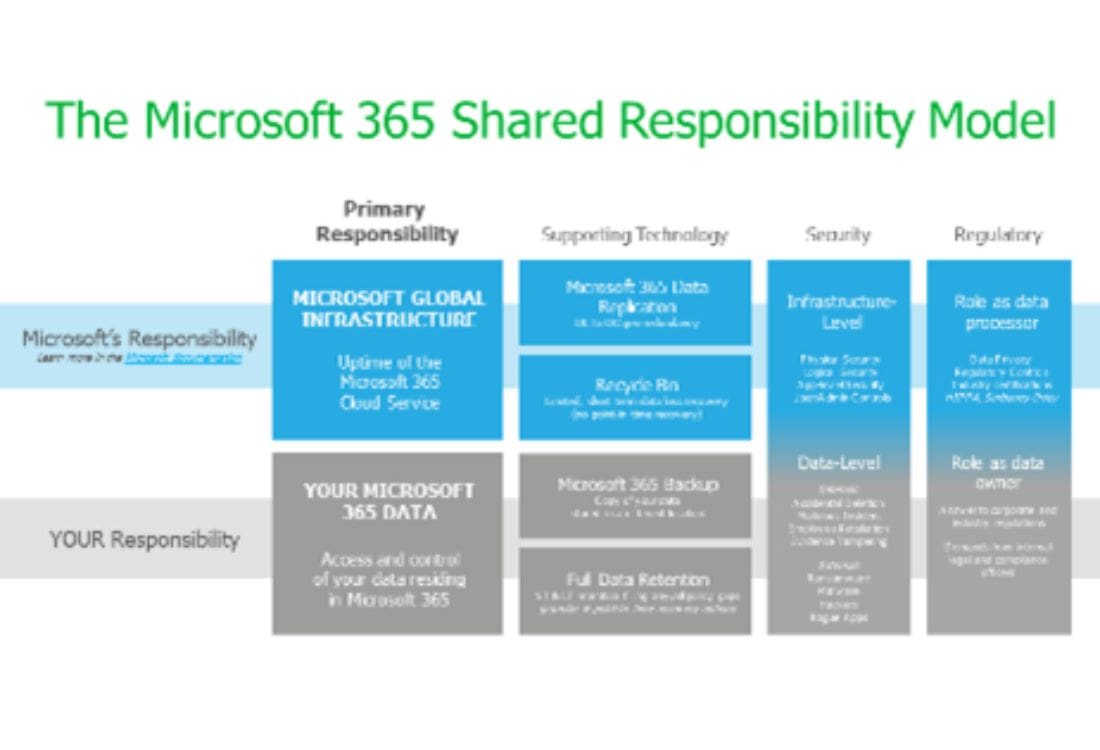Do You Know What Microsoft’s Shared Responsibility Model Is?
- Alexa Davis
- May 27, 2024
- 12:30 PM
- No Comments
Microsoft's Shared Responsibility Model is something that every Microsoft 365 user should know about and understand. This model delineates the division of responsibility between Microsoft and its customers, especially with regard to data integrity and backups. While Microsoft ensures the robustness of the infrastructure, the onus of maintaining data integrity falls squarely on the shoulders of customers.
In this article, we’ll explain what the Shared Responsibility Model means for you and what actions you can take to ensure your business’s data integrity.
Microsoft’s Role: Infrastructure Maintenance
Microsoft's primary responsibility under the Shared Responsibility Model is to maintain its cloud infrastructure. This includes ensuring the physical security of data centres, maintaining hardware, and providing a reliable and secure cloud environment for services such as Microsoft 365. However, it is vital to understand that this responsibility does not extend to managing the data, applications, and other elements that customers bring into the cloud.
The Customer Responsibility: Data Integrity And Backups
The other half of the Shared Responsibility Model concerns Microsoft’s customers. When you use Microsoft 365, you are responsible for managing the data you store on these platforms from email, Teams, SharePoint, OneDrive, and other Microsoft applications. It’s a common misconception that cloud services such as Microsoft 365 provide complete backup solutions. In reality, Microsoft 365 offers limited short-term data loss recovery options, such as the recycle bin, which are simply not sufficient for comprehensive data protection.
The Risk Of Data Loss
The limited backup capabilities within Microsoft 365 pose a significant risk to businesses that don’t take immediate action to protect their critical data assets. If data loss occurs as a result of ransomware attacks, hardware failures, or other unforeseen events, recovering the files may be impossible without proper backup solutions in place. Statistics demonstrate the acute risks involved: of those businesses which experience extended data loss (in excess of 10 days), one-half file for bankruptcy immediately and 93 per cent within 12 months. This underscores the critical need for customers to actively manage their data backups.
The Solution
So, what should your business do to ensure that it doesn’t become a statistic? To mitigate the risks of data loss, you should utilise external backup solutions, such as TMB’s Microsoft 365 backup service, which offers a resilient layer of protection by backing up your critical data to a secure offsite location. In the event of data loss or a disaster, you will be able to restore your data quickly and efficiently, with minimal disruption to your organisation’s operations.
Contact Us To Find Out More
To find out more about our Microsoft 365 backup service, please book a call with TMB today.



